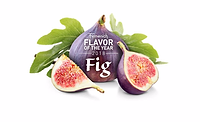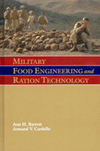3 Major Encapsulated Flavor and Fragrance Products Popularized By Manufacturers

Image courtesy of Givaudan
Givaudan, one of the most renowned names in the encapsulated flavors and fragrances industry, has recently come up with the "PrimeLock+" technology that replicates fat cells of animals with encapsulated coconut oil. Aimed to help consumers achieve the feel and flavor of meat, this launch is a vegan-friendly solution offering encapsulated flavors to reduce high-fat content while enhancing the juiciness of plant-based products.
The product launch is one of many across the global encapsulated flavors and fragrances market, which is presently traversing along a positive growth path. Using varied flavors and fragrances in different food and beverage products as well as homecare and toiletries is now becoming commonplace. Encapsulated flavors, in general, may help increase the shelf-life of the product as they ensure better stabilization of active materials.
Encapsulated flavors also boast features like undesirable flavor and odor masking, ease of use, and efficient delivery of nutrients, making them highly popular among the masses. The encapsulated flavors and fragrances market is anticipated to amass annual revenue of more than $10.2 billion by 2027, as per Global Market Insights Inc.
Unveiling Product Trends Across Encapsulated Flavors and Fragrances Industry
The demand for different encapsulated flavors and fragrances is skyrocketing across food and beverage, homecare, wellness, and other sectors. Flavor and fragrance blends, aroma chemicals and essential oils and natural extracts are some of the popularly used products that have led to significant expansion in the industry over recent years.
1. Flavor blends
Flavor blends, especially the savory flavor blends, are currently an industry favorite, especially across the food and beverage business, as they impart an authentic flavor profile that is a mix of sweet, salty and pungent tastes. These are generally used in the preparation of foods like dips, snacks and cheese.
A considerable shift in dietary patterns and proliferating intake of spicy and seasonal foods universally have helped increase the demand for flavor blends. As lifestyles and work culture continue to evolve, consumers have been experiencing considerably more frantic daily routines. This, in turn, has led to people spending less time and money for cooking meals at home, bringing about a lucrative opportunity for restaurants and food delivery partners.
According to the Economic Research Service, USDA, food service and food retailing industries supplied nearly $2.12 trillion worth of food in 2021. Out of this, about $1.17 trillion was supplied by food service facilities. These statistics present a positive scenario for the flavor blend business, enabling market leaders to eye new opportunities.
Citing an example to support the aforesaid, Olam Food Ingredients—a pioneer in natural and sustainable solutions and ingredients— launched its first collection of new spice blends range in 2021. The range, known as Blends of the Americas, includes 17 ready-to-use blends that offer food service companies, food manufacturers and retailers a simple solution for developing authentic and consistent flavors inspired by some of the popular cuisines worldwide.
2. Fragrance blends
Fragrance blending is a topic of interest amongst different fragrance enthusiasts. Blending fragrance is a great way to develop a unique scent, that is not available in the market, out of different other naturally available fragrances or essential oils. It also provides an opportunity for producers to play with the strengths of different fragrances to ensure that a completely exclusive fragrance is created. Furthermore, trials of new scent combinations and the trend of "Do it Yourself" has potentially helped fragrance suppliers harness their sales multifold.
Recently, Ford announced that it plans to enter the fragrance blends business to give its EV owners the smell of fossil fuels through the creation of gasoline fragrance. As per a survey conducted by the company, it was stated that 70% of the electric vehicle owners missed the smell of gasoline while switching to EVs. This was what encouraged the company to consider developing scents that help consumers reminisce the scent of gasoline.
To achieve this blend, the research team mixed different scents like geranium, lavender, blue ginger and sandalwood. For a metallic and smoky smell, sandalwood was included to provide the impression of horses.
3. Essential oils and natural extracts
Food and beverage companies have been using artificial and synthetic food additives and flavors on a large scale since a while now. Unfortunately, excessive consumption of the same may lead to adverse human health issues. Given their side effects, the FDA, along with the Breast Cancer Fund, the Natural Resources Defense Council, the Center for Science in the Public Interest, and the Environmental Defense Fund, had in 2018 announced a petition to ban the use of artificial flavors like benzophenone, styrene, methyl Eugenol and others. These additives apparently caused cancer in lab animals.
This regulatory intervention eventually led to increasing adoption of essential oils and natural extracts in the food and cosmetics industries. They are also considered to be the backbone of the flavors and fragrances industry.
Natural extracts applications in food and beverages sector:
Food and beverage producers are now shifting their interests toward using natural extracts in place of synthetic food flavors to deliver quality taste and health to its consumers. The field is replete with various research studies supporting the usage of these products.
Recently, a study published in the Institute of Food Science & Technology magazine revealed the advantages of the application of natural extracts as a substitute to sodium nitrite in processed meats. Results depicted that sorghum red pigment powder (a natural coloring agent) offers stable pigments and can be added as a natural extract to the production of canned meat recipes to maintain the same red color as offered by sodium nitrite.
Essential oil applications in the cosmetic sector:
Essential oils are crucial assets in the cosmetics industry, as they not only help in infusing pleasant aromas in various products, but also act as active agents and preservatives and offer ample benefits to the skin. The increasing demand for natural ingredients has also contributed substantially to a renewed interest in essential oils across wellness and cosmetics applications.
Some of the highly valued essential oils used as fragrances include eucalyptus, citrus, floral oils, tea tree and lavender. Geraniol, citral, linalool, limonene and citronellol are some of the other notable fragrances popular among the masses.
According to estimates, encapsulated flavors and fragrances market share from essential oils and natural extracts segment may exceed $2 billion by 2027.
What Does the Future Hold for the Encapsulated Flavors and Fragrances Industry?
Having recognized the significance of these compounds and their requirement across applications, prominent industry players have been bringing about strategic growth initiatives across the business. For instance, in 2021, Eternis Fine Chemicals announced the acquisition of UK-based Tennants Fine Chemicals. Through this acquisition, the former seeks to expand its portfolio of aroma chemicals and make use of multi-location production and distribution platforms through the transaction.
During the pandemic, the demand for toiletries and home care products surged considerably. This also led to a spurt in the demand for aroma chemicals, presenting a new avenue for the encapsulated flavors and fragrances market. The expanding e-commerce sector worldwide and resultant surge in the consumption of packaged food and personal care products have provided a substantial boost to the flavor and fragrance providers. Emerging economies in APAC and South America will be notable contributors to the sector, as booming population and incomes have created a wider audience for food and beverage manufacturers.Looking for a reprint of this article?
From high-res PDFs to custom plaques, order your copy today!








